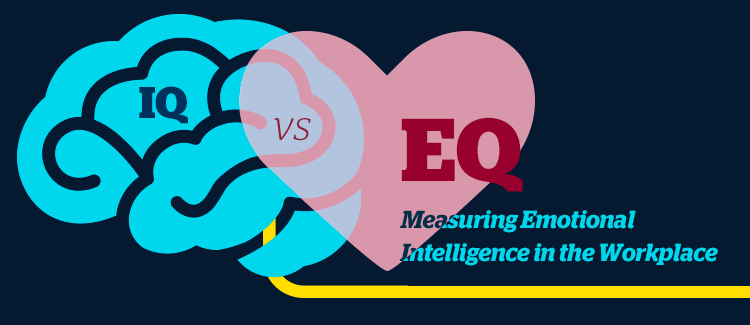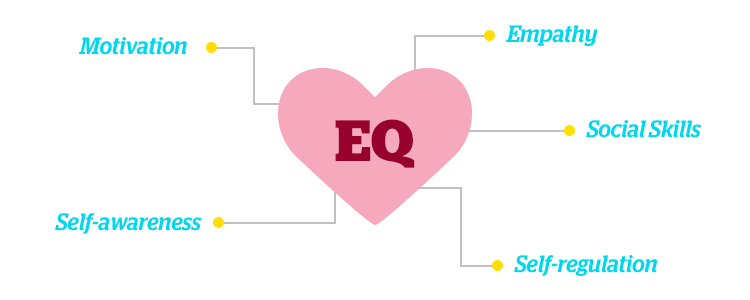Throughout history, scientists have tried to measure intelligence in many different ways and formats. These measures of intelligence have been used to rank people in ability, talent and other characteristics. For a business seeking new employees, finding highly intelligent candidates is key. But how much does intelligence truly relate to workplace success? Does emotional intelligence factor in, and if so, how?
Intelligence Quotient (IQ)
IQ is the most common professional measurement of human intelligence. Since its inception at the turn of the 20th century, it has been used in countless psychological studies as well as in business, education and even government.

THE HISTORY OF IQ
Thinkers have long been interested in the varying intelligence of individuals. But in the early 1900s, the French government commissioned psychologist Alfred Binet to identify which students were the most likely to have difficulty in school. With a new law requiring all French children attend school, Binet hoped to determine which students would need specialized assistance.
Binet and his colleague Theodore Simon quickly developed the Binet-Simon Intelligence Scale, which remains the basis for most intelligence tests used today. While some were excited about the creation, Binet stressed that the test had limitations. Just as standardized intelligence measurement began, Binet was suggesting that intelligence was too broad to quantify.
In 1916, Stanford University professor Lewis Terman completed his alteration of the original test and released the Stanford-Binet Intelligence Scale. This test quickly became the standard IQ measurement in the United States and was the first to use the term “intelligence quotient.” Throughout the 20th century, more and more tests were created. Several were created for unique purposes, like the military or children. American psychologist David Wechsler developed the Wechsler Adult Intelligence Scale (WAIS) in 1955, which remains among the most common IQ tests used today.
IQ TESTS
The Stanford-Binet Intelligence Scale and the Wechsler Adult Intelligence Scale are the most popular tests, according to University of Connecticut educational psychology professor Jonathan Plucker. Although both seek to measure intelligence through IQ, they are different in their own ways.
Stanford-Binet Intelligence Scale
Since its inception, there have been five editions of the Stanford-Binet, which is primarily used as a part of the teaching process. This is due in large part to the ability of the test to provide test-takers with more hands-on portions. The test can be administered to individuals as young as 2 years old and includes both a verbal and nonverbal portion.
Wechsler Adult Intelligence Scale
The WAIS has been revised four times and is designed for individuals over the age of 16. The test provides four scores in verbal comprehension, perceptual organization, working memory and processing speed. It also produces an alternate score called the General Ability Index that is only based on comprehension and reasoning.
IQ IN THE WORKPLACE
In 1971, the U.S. Supreme Court ruled in Griggs v. Duke Power Co. that intelligence tests such as IQ exams used for hiring must be related to job performance. Thus, companies refrain from using them specifically in hiring, but it isn’t uncommon for tests to be used after someone is hired.
The Harvard Business Review notes that while IQ tests are a possible predictor of managerial success, they have their shortcomings. Some skills that are measured, such as vocabulary, arithmetic and spatial reasoning, are not as applicable to the workplace.
Emotional Intelligence (EQ)
Emotional intelligence is distinct from IQ. “Your EQ is the level of your ability to understand other people, what motivates them and how to work cooperatively with them,” Harvard education professor Howard Gardner explains. In some ways, EQ is far more important and valuable than IQ.
THE HISTORY OF EQ
Gardner introduced the idea of EQ, positing that individuals have “multiple intelligences.” Gardner suggests that “intrapersonal intelligence” is the ability to understand ourselves and appreciate feelings, fears and motivations.
The actual term “emotional intelligence” was not made widely known until psychologist Daniel Goleman published the book Emotional Intelligence in 1995. It immediately became a best-seller, and EQ was suddenly a topic beyond the realm of academia.
UNDERSTANDING EQ
Goleman outlined a five-part model of what constitutes EQ. Each involves a different ability in managing and understanding emotion.

Self-awareness: This is the ability to recognize and identify personal emotions, moods and drives. It also includes the effect on others.
Self-regulation: An important part of EQ is the ability to control or deflect impulses or moods that may disrupt emotions. Also included in self-regulation is the propensity to think before acting and removing extreme emotions from judgment.
Motivation: This component involves setting clear goals and pushing toward achieving them. Having a positive attitude and forward drive is also included.
Empathy: This category describes how people recognize the feelings of others and what they do with those feelings. Individuals with high empathy will offer corresponding responses to those they care about and love.
Social skills: The final part of EQ involves the interpersonal skills people use on a daily basis. This includes collaboration, cooperation, conflict management, influence on others and handling change.
EQ TESTS
The most popular way of measuring the Goleman model of EQ is via the Emotional Competency Inventory (ECI), a test created in 1999 by the Consortium for Research on Emotional Intelligence in Organizations(CREIO). The test was updated in 2007 and is now called the Emotional and Social Competence Inventory (ESCI).
CREIO says the test can help companies understand the full behaviors that “differentiate outstanding from average performers.” The consortium offers the test primarily as a method for organizations to measure the leadership qualities of employees.
EQ IN THE WORKPLACE
According to a 2014 article published by the University of Pennsylvania’s Wharton School, almost 20 percent of companies are now measuring EQ in the hiring or promotion process. A Harvard Business Review study found that companies in the service industry made better hiring decisions by using short psychometric tests to weed out the least suitable applicants.

In many ways, the personality tests that companies use are their own form of EQ measurements. Companies want to understand how current and potential employees fit into their teams. They use tests like the Myer-Briggs to understand their employees — and EQ has a lot to do with that.
IQ, EQ and Business
The business world is continuing to understand how to properly implement the use of EQ for the betterment of their personnel. But since Goleman first used the term in 1995, he has inspired countless organizations to take EQ into consideration. Since publishing his book, Goleman has spoken across the world on how good leaders have a high EQ.
Travis Bradberry, coauthor of Emotional Intelligence 2.0, notes in an article for Forbes that high EQ helps organizations understand the intangibles that make leaders successful. EQ is the strongest predictor of performance; in Bradberry’s studies, 90 percent of top performers are high in EQ and just 20 percent of bottom performers are high in EQ. As far as IQ, people with average IQ scores outperform those with higher IQs a majority of the time.
The important difference between IQ and EQ is that EQ can be developed. By gaining more experience and education, professionals can improve their EQ and become better leaders. Organizations can identify who needs improvement in EQ and develop strategies to increase it. This can help companies foster new leaders more efficiently than looking for pure intellect.
The Growing Integration of EQ in Business
EQ is playing a part in how companies view their personnel. As more and more companies embrace EQ measuring tools, professionals will have to understand their EQ and how to improve it. At Campbellsville University, we provide our business students with invaluable knowledge needed to become dynamic forces in the workplace. Our online business programs, including an online MBA with six specializations such as human resource management, prepare students to achieve leadership roles in their careers.

